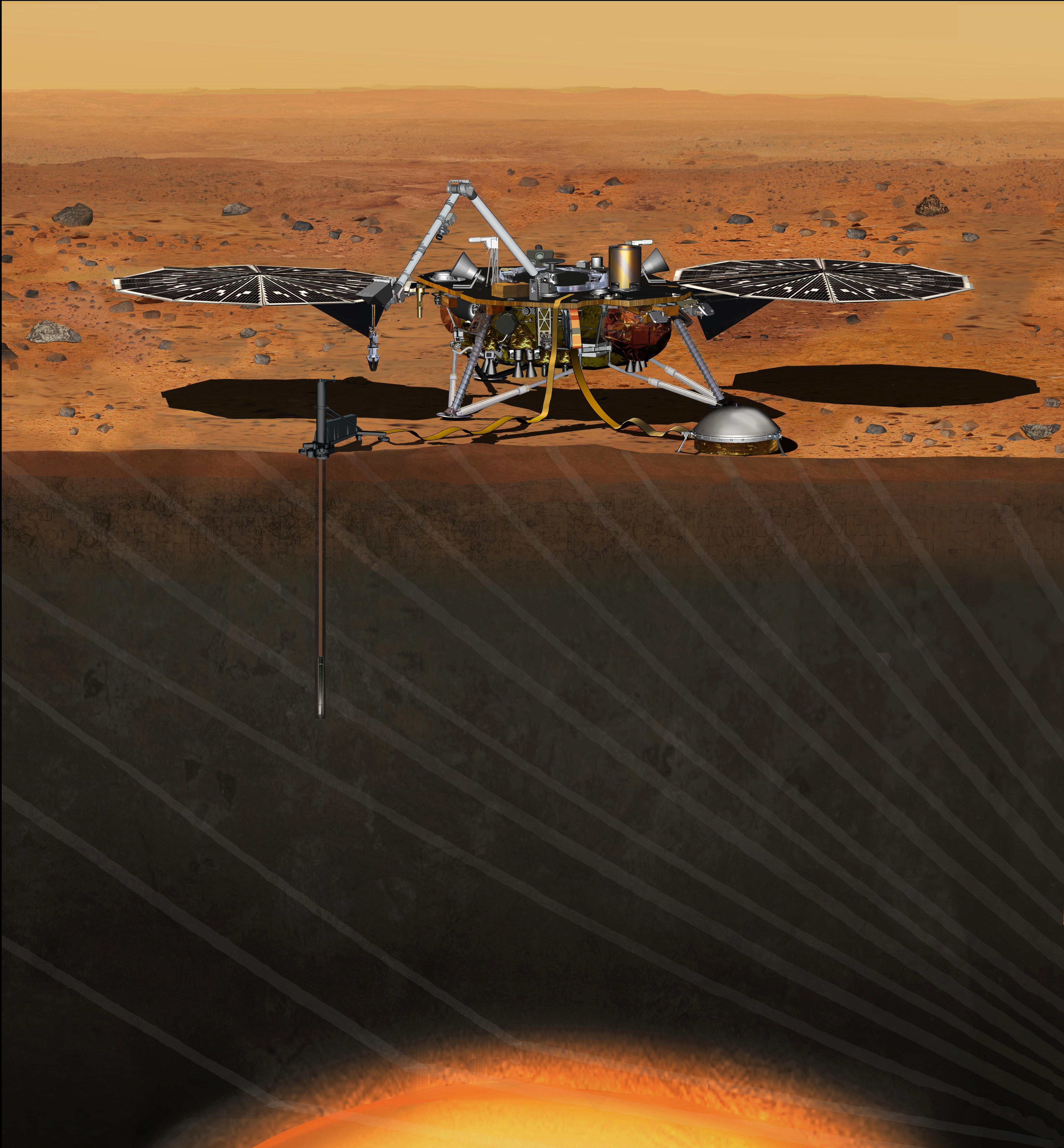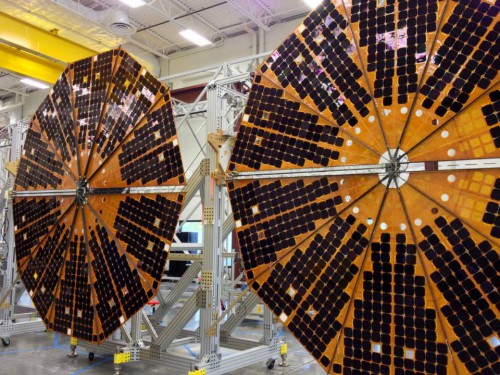
On Tuesday, June 24, Alliant Techsystems (ATK) announced that it received a contract from Lockheed Martin Space Systems to provide UltraFlex solar arrays for NASA’s 2016 InSight Mars Lander mission. The UltraFlex system, according to David Shanahan, vice president and general manager of ATK’s Space Components division, has a “unique round fan-fold design that enables much higher performance than typical spacecraft solar arrays.” This kind of array is essential for deep space exploration, an area NASA intends to delve more into over the next decade.
Shanahan added why such a design is a necessity due to the demand for spaceflight components with lower mass—on future missions, space (not just the kind beyond Earth’s atmosphere) is of the utmost importance. “With spacecraft facing increasingly ambitious low-mass and constrained packaging requirements, ATK’s arrays deliver all the power our customers need with this enabling technology,” he related.

UltraFlex’s design passed a critical design review in February of this year. The company is currently constructing the arrays; they will be tested later this year and are scheduled for a 2015 delivery for installation. ATK stated that their design is based on the arrays that powered the Mars Phoenix Lander during its five-month 2008 mission.
The company is also currently designing UltraFlex arrays for Orbital Sciences Corporation’s Commercial Resupply Spacecraft (CRS), otherwise known as the Cygnus spacecraft. This spacecraft conducts cargo missions to the International Space Station (ISS).
While UltraFlex arrays have been used by NASA for years, ATK is currently developing its next “giant leap” in solar array technology. This week’s announcement comes nearly two years after ATK was awarded a $6.4 million Phase 1 Space Technology contract from NASA’s Space Technology program in order to develop a larger version of the arrays, according to a May AmericaSpace article written by Mike Killian. In May, the company announced they had successfully tested the MegaFlex solar array wing, intended to power future Solar Electric Propulsion (SEP) systems for robotic—and, eventually, human—spaceflight.
It is hoped these solar arrays will aid deep space missions including NASA’s proposed Asteroid Redirect Mission and, hopefully, future jaunts to Mars. In the previous AmericaSpace article cited, Killian wrote, “A flight demonstration version of the MegaFlex solar array technology is expected to be produced under a future Phase 2 contract to prove the technology works as expected in an actual spaceflight, and it is likely that NASA’s Orion spacecraft will utilize MegaFlex for the agency’s Asteroid Redirect Mission and other deep-space missions starting next decade when the SLS can support such flights beyond low-Earth orbit.” In an AmericaSpace article published Monday, it was revealed that NASA had selected 18 study proposals concerning a future Asteroid Redirect Mission, bringing that idea closer to reality.
InSight (Interior Exploration using Seismic Investigations, Geodesy and Heat Transport) is a lander which will use its instruments to explore the Red Planet’s seismic activity, geophysics aspects, and heat flow. By studying these aspects of Mars, scientists and researchers intend to learn more about the planet’s tectonic processes. It is intended to launch in March 2016. Powered by ATK’s UltraFlex solar arrays, it is hoped the lander will help us Earthlings gain “insight” into terrestrial planetary formation.
Want to keep up-to-date with all things space? Be sure to “Like” AmericaSpace on Facebook and follow us on Twitter: @AmericaSpace




We expect solar panels to continue to improve but they are already plenty good enough for a mars colony (where solar panels are only one of many potential sources of power.)
Launch costs put everything else in the noise. Flight rates will bring down launch costs. Increasing flight rates will happen when the economic light bulb goes off that… going to mars can be profitable for everybody involved (at today’s cost which will come down making the future of colonization bright.)
Mars has a chicken and egg problem that can be solved. It is immoral not to add mars real estate to the solar systems economic sphere. Mars pays for its own colonization. But the historic legal method is a claim by possession which can only happen after the first human reaches the surface of mars.
The answer is a trust. People can pay into the trust for the right to have land conveyed to them after it is claimed. The colonist agrees (by contract) to claim land into that trust after they arrive.
There is plenty of money for mars missions if speculators know they are getting something for there money. 25 cents per square meter (to $3b) should pay for the first dozen colonists. Later that 25 cents should pay for many multiples more as costs come down.
The transportation companies (which does not have to be those providing the actual vehicles, but could be) simply sells tickets at a profit for transportation of a colonist w/spacesuit and 1000 kg of personal property alive to the martian surface. That’s their total obligation. Martians are responsible for their own lives after that so should choose the property they take with themselves with that in mind. Individual freedom works.
Every kg of that personal property has a mass surcharge value above it’s cost on earth. This provides wealth to the colonist. Enough for a lifetime and true for all those colonists that follow. This also negates the need for any resupply missions eliminating that cost from consideration.
The first landing will need about twice that mass to get ISRU started but Mars One could provide that (since it’s already part of their plans)and the trust could pay for the actual colonists that follow those supplies (relieving them of a major cost potentially closing their likely funding gap.)
In the near future (within a decade) the cost of a mission will come down from a few billion to half a billion for the same and greater payload. Musk has plans to go to a tenth of that. Since profit can be had by all now and the future depends on actions today we have no reason to delay (other than the delay in implementation and risk mitigation.)
Actually, we have a moral obligation not to waste any time to start colonization which will be profitable for all and make space meaningful to those speculators that actually finance it all. I’m already in discussion with lawyers regarding such a trust.
Wow, a narrowly defined factual article about a single contractor being given a single contract to produce solar arrays for a single space probe produces a lengthy post asserting how SpaceX will colonize Mars.
Congratulations on producing the most far ranging off topic post in the history of the internet.
Why thank you Joe, but I’m certainly not worthy of that honor.
Not having $3 billion makes me cranky.